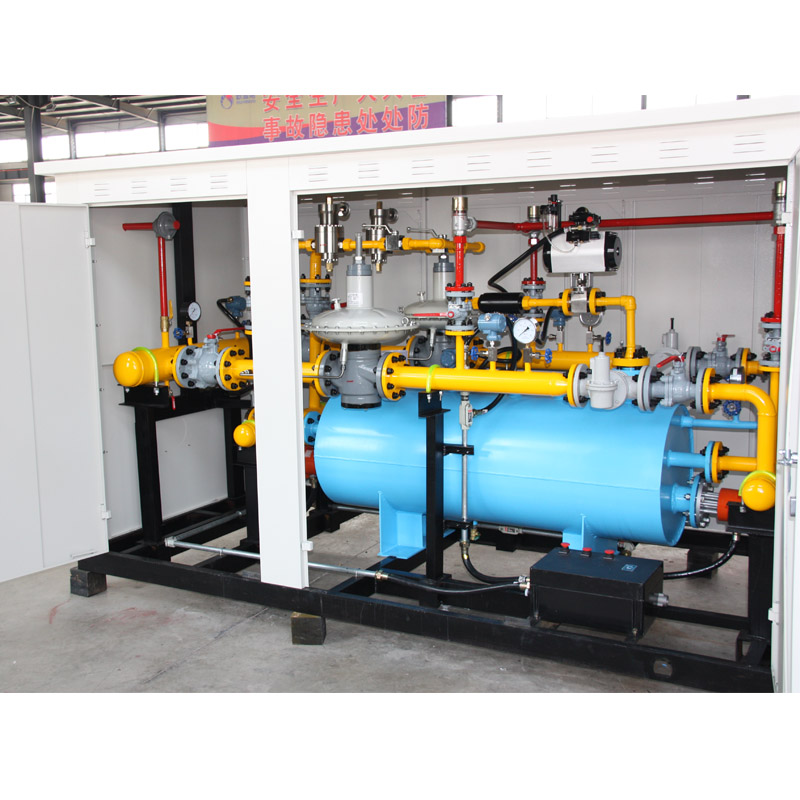
12 月 . 03, 2024 18:01
Back to list
natural gas pressure reducing station
Natural Gas Pressure Reducing Stations Essential Components in Natural Gas Distribution
Natural gas has emerged as a critical energy source worldwide due to its efficiency and lower environmental impact compared to other fossil fuels. However, the safe and effective distribution of natural gas relies heavily on various infrastructure components, one of which is the pressure reducing station (PRS). This article delves into the function, importance, and operational aspects of natural gas pressure reducing stations.
What is a Pressure Reducing Station?
A pressure reducing station is a crucial installation in the natural gas distribution network. Its primary function is to reduce the high-pressure gas from transmission pipelines to a lower pressure suitable for distribution to consumers, such as residential, commercial, and industrial users. In transmission pipelines, natural gas is often transported at high pressure (ranging from 200 to over 1000 psi) to ensure efficient movement over long distances. Once the gas reaches a certain point closer to where it will be used, such as a city or town, it requires regulation to ensure safety and functionality.
Importance of Pressure Reducing Stations
The importance of pressure reducing stations cannot be overstated. First and foremost, they enhance safety. High-pressure gas can pose significant risks, including leaks and explosions. By reducing the pressure to safer levels, pressure reducing stations help mitigate these risks and protect both infrastructure and individuals.
Secondly, PRSs contribute to the efficiency of the gas distribution network. Proper pressure regulation ensures that the gas is delivered at the right pressure that consumers can use effectively. Whether gas is used for heating, cooking, or powering industrial processes, maintaining an optimal pressure is vital for system efficiency and performance.
Additionally, pressure reducing stations help to maintain the quality of the natural gas. If gas is transported and distributed at excessively high pressures, there is a risk of accelerating contaminants and moisture through the system. Pressure reducing stations play a role in filtering out these unwanted elements, ensuring that the gas delivered is of high quality and meets industry standards.
Components of a Pressure Reducing Station
A typical pressure reducing station includes several critical components that work together to fulfill its function effectively. These components include
natural gas pressure reducing station

1. Pressure Regulators These devices automatically adjust the flow of gas based on the pressure changes within the system. They are essential for maintaining consistent output pressure.
2. Isolation Valves These valves allow for maintenance and safeguarding of the system. When needed, they can isolate sections of the pipeline, ensuring that repairs or upgrades can be performed safely without disrupting service.
3. Bypass Lines Bypass lines enable gas to continue flowing during maintenance or in case of a regulator failure. This redundancy is crucial for ensuring uninterrupted gas supply.
4. Filtration Systems These systems help to remove impurities, ensuring that the gas delivered is clean and suitable for consumption.
5. Flow Meters Flow meters measure the quantity of gas passing through the system, allowing operators to monitor usage and detect anomalies.
Operational Aspects
Pressure reducing stations are typically located strategically within a gas distribution network to optimize performance and provide easy access for maintenance and monitoring. Operators must conduct regular inspections to ensure the stability of the entire system. Advanced monitoring technologies, including remote sensing and automation, are increasingly being adopted in modern pressure reducing stations. These advancements enhance operational efficiency and provide real-time data that can be used for predictive maintenance and system optimization.
Furthermore, environmental considerations are becoming more prevalent in the operation of pressure reducing stations. With the global push towards sustainability and reducing carbon footprints, there is a growing emphasis on minimizing energy losses during gas pressure regulation. Innovations in designs and materials are helping to create more eco-friendly PRSs that contribute to energy conservation.
Conclusion
Natural gas pressure reducing stations are integral to the safe, efficient, and reliable delivery of natural gas to consumers. By regulating pressure, enhancing safety, and maintaining gas quality, these stations play a vital role in the natural gas infrastructure. As the world continues to move towards cleaner energy sources, the importance of optimizing natural gas distribution through advanced pressure reducing stations will only grow, underscoring their role in a sustainable energy future.
Next:
Latest news
-
Unlocking The Quality Gas Pressure ReducersNewsNov.01,2024
-
The Role of Gas Pressure Reducing StationsNewsNov.01,2024
-
The Importance and Functionality of Safety Relief ValvesNewsNov.01,2024
-
The Essential Role of Safety Valves in Natural Gas ApplicationsNewsNov.01,2024
-
The Essential Role of Gas Pressure RegulatorsNewsNov.01,2024
-
Enhance Your Premium Gas FiltersNewsNov.01,2024

